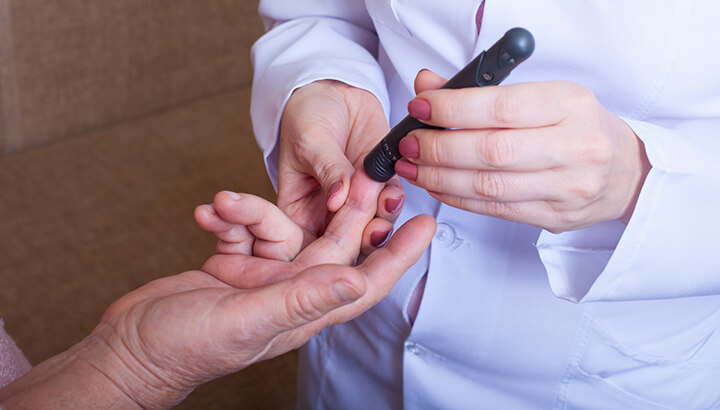
Let’s be honest for a moment. As a whole, humans can be pretty superficial. Media has played a key role in how we feel about ourselves, making it seem like beauty is only skin deep. We’re continuously bombarded with images of stunning individuals, with the “perfect” body and flawless (photoshopped) skin. After all, they’re not going to let a “zit” take center stage on a magazine cover.
I wish that we would start celebrating our imperfections, because at the end of the day, we’re all unique — and that’s something that we should embrace. I just wanted to take a quick moment to say that, expressing the importance of self-love.
Now, let’s get down to business — skin tags. What are they and should you remove them? Are they more of a cosmetic concern or do they pose an actual risk to your health?
What are skin tags?
I just want to start off by saying, skin tags are extremely common. It’s estimated that approximately 50 percent of adults will develop at least one in their lifetime. Okay, so they’re common — but what the heck are they?
Essentially, skin tags are comprised of blood vessels and collagen fibers. Scientifically known as an acrochordon, these tags are tiny benign tumors. Although they can form anywhere on the body, they often develop in areas where skin creases. These include your neck, groin, armpit or under your breasts. When forming on the face, they tend to develop on your eyelids.
Here are a few facts, so that you can become a little more familiar with your skin tags:
- They’re more common in women than men and tend to be more prevalent among obese individuals.
- They are both painless and harmless.
- They do not generally grow over time and are typically the size of a grain of rice.
- Although there is believed to be a genetic component, skin tags typically form due to friction. As skin rubs on skin, tags form.
If you’re frantically searching for an answer as to whether or not your skin tags are threatening your well-being, then let me say — for the most part — skin tags aren’t anything to worry about. Although removal options are certainly available, they’re only typically removed if they cause irritation or bother the individual.
Whether or not you should cut off your skin tags is entirely up to you. Well, don’t “cut” them off — but if you wish, you can remove them naturally. If you find that your skin tags are displeasing to look at, or you have them in an area that rubs on tight clothing, you can easily remove them. Before you do, here’s what you should know.
Skin tags and metabolic syndrome

As mentioned, anyone can develop a skin tag — even infants and children. Over the years, researchers have explored the possible connection between skin tags, type 2 diabetes and obesity. In that sense, skin tags may be harmless themselves, but could they be a sign of something greater?
There are concerns that skin tags may be more common among individuals suffering from metabolic syndrome — which is a group of risk factors that increase your risk of heart disease, diabetes and stroke. Since researchers have found some abnormalities regarding lipid and carbohydrate metabolism among patients with skin tags, it’s worth exploring.
Within one recent study, published in Annals of Medical and Health Sciences Research, researchers were interested in whether or not skin tags could be a marker of metabolic syndrome. After studying 110 patients (having two or more tags), as well as 110 control subjects, researchers found the following:
- 58 patients with skin tags had diabetes, in comparison to 12 control subjects
- 15 percent of patients had impaired glucose tolerance, in comparison to 8 percent of control subjects.
- Patients with skin tags had higher systolic and diastolic blood pressure, in comparison to the control group
The researchers concluded that skin tags may, in fact, be a sign of metabolic syndrome. In that case, these patients would benefit from making key lifestyle changes. Based on their findings, particularly high serum levels of key enzymes, researchers were interested in investigating the possible relationship between skin tags and liver diseases.
Skin tags and other diseases
This relationship was also reported within a 2013 study, published in the Indian Journal of Dermatology. Researchers wanted to explore the impact of age, metabolic syndrome, skin tags, BMI and smoking on cardiovascular diseases. This study focused on 30 cardiac patients with skin tags. Researchers studied 30 noncardiac patients with skin tags and 30 healthy control subjects with neither skin tags or heart disease.
Researchers concluded that skin tags may act a physical symptom of underlying cardiac atherogenic factors. These include increased triglycerides, high-density lipoproteins and total cholesterol. Since these factors threaten coronary circulation, the researchers described skin tags, obesity and metabolic syndrome as a “Bermuda Triangle” that acts against the heart.
Of course, just because you have a skin tag, doesn’t mean that you’re at risk for a heart attack, so don’t panic. With that being said, there does appear to be a connection. If you are overweight and have developed numerous skin tags, this may be a sign that you’d benefit from key lifestyle changes.
Related: Do You Have Metabolic Syndrome?
How to remove your skin tags naturally
Do you have one or two skin tags that you want to remove? As long as they’re painless and not causing any real concerns, they can be cosmetically removed. Please note: If your skin tags have become twisted, or they are overly irritated, hurt or bleeding, please seek advice from a qualified dermatologist.
You can go to your doctor to have skin tags snipped or removed using super freezing or heating. However, there are at-home remedies that can be just as effective. If you would like to remove a skin tag, try the following:
Apple cider vinegar

Simply soak a cotton ball in apple cider vinegar and place on the skin tag for up to 15 minutes. Repeat this process three times daily, until it dries and eventually falls off.
Tea tree oil
As long as you do not suffer from sensitive skin, dip a Q-tip into pure tea tree oil, and place on skin tag two to three times daily, for approximately 10 minutes. For added benefits, you can combine tea tree oil with coconut oil — applying each night before bed.
Oil of oregano
Although you can make your own infused oil, pure oregano essential oil with jojoba oil works beautifully. Follow the same steps as you would with apple cider vinegar.
If you have skin tags bothering you, don’t cut them off. Instead, seek professional removal or try some of the home remedies discussed above. Alternatively, you can ask yourself, “Does this skin tag really matter?” It’s time we start seeing the beauty in one another — something that runs much deeper than our external skin.
— Krista Hillis

